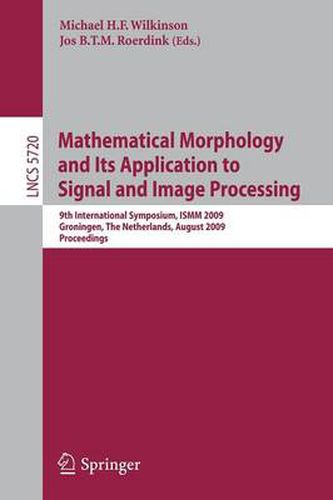Readings Newsletter
Become a Readings Member to make your shopping experience even easier.
Sign in or sign up for free!
You’re not far away from qualifying for FREE standard shipping within Australia
You’ve qualified for FREE standard shipping within Australia
The cart is loading…






This title is printed to order. This book may have been self-published. If so, we cannot guarantee the quality of the content. In the main most books will have gone through the editing process however some may not. We therefore suggest that you be aware of this before ordering this book. If in doubt check either the author or publisher’s details as we are unable to accept any returns unless they are faulty. Please contact us if you have any questions.
The 9th ISMM conference covered a very diverse collection of papers, bound together by the central themes of mathematical morphology, namely, the tre- ment of images in terms of set and lattice theory. Notwithstanding this central theme, this ISMM showed increasing interaction with other ?elds of image and signal processing, and several hybrid methods were presented, which combine the strengths of traditional morphological methods with those of, for example, linear ?ltering.This trendis particularlystrong in the emerging?eld of adaptive morphological ?ltering, where the local shape of structuring elements is det- mined by non-morphological techniques. This builds on previous developments of PDE-based methods in morphology and amoebas. In segmentation we see similar advancements, in the development of morphological active contours. Even within morphology itself, diversi?cation is great, and many new areas of research are being opened up. In particular, morphology of graph-based and complex-based image representations are being explored. Likewise, in the we- established area of connected ?ltering we ?nd new theory and new algorithms, but also expansion into the direction of hyperconnected ?lters. New advances in morphological machine learning, multi-valued and fuzzy morphology are also presented. Notwithstanding the often highly theoretical reputation of mathematical morphology, practitioners in this ?eld have always had an eye for the practical.
$9.00 standard shipping within Australia
FREE standard shipping within Australia for orders over $100.00
Express & International shipping calculated at checkout
This title is printed to order. This book may have been self-published. If so, we cannot guarantee the quality of the content. In the main most books will have gone through the editing process however some may not. We therefore suggest that you be aware of this before ordering this book. If in doubt check either the author or publisher’s details as we are unable to accept any returns unless they are faulty. Please contact us if you have any questions.
The 9th ISMM conference covered a very diverse collection of papers, bound together by the central themes of mathematical morphology, namely, the tre- ment of images in terms of set and lattice theory. Notwithstanding this central theme, this ISMM showed increasing interaction with other ?elds of image and signal processing, and several hybrid methods were presented, which combine the strengths of traditional morphological methods with those of, for example, linear ?ltering.This trendis particularlystrong in the emerging?eld of adaptive morphological ?ltering, where the local shape of structuring elements is det- mined by non-morphological techniques. This builds on previous developments of PDE-based methods in morphology and amoebas. In segmentation we see similar advancements, in the development of morphological active contours. Even within morphology itself, diversi?cation is great, and many new areas of research are being opened up. In particular, morphology of graph-based and complex-based image representations are being explored. Likewise, in the we- established area of connected ?ltering we ?nd new theory and new algorithms, but also expansion into the direction of hyperconnected ?lters. New advances in morphological machine learning, multi-valued and fuzzy morphology are also presented. Notwithstanding the often highly theoretical reputation of mathematical morphology, practitioners in this ?eld have always had an eye for the practical.